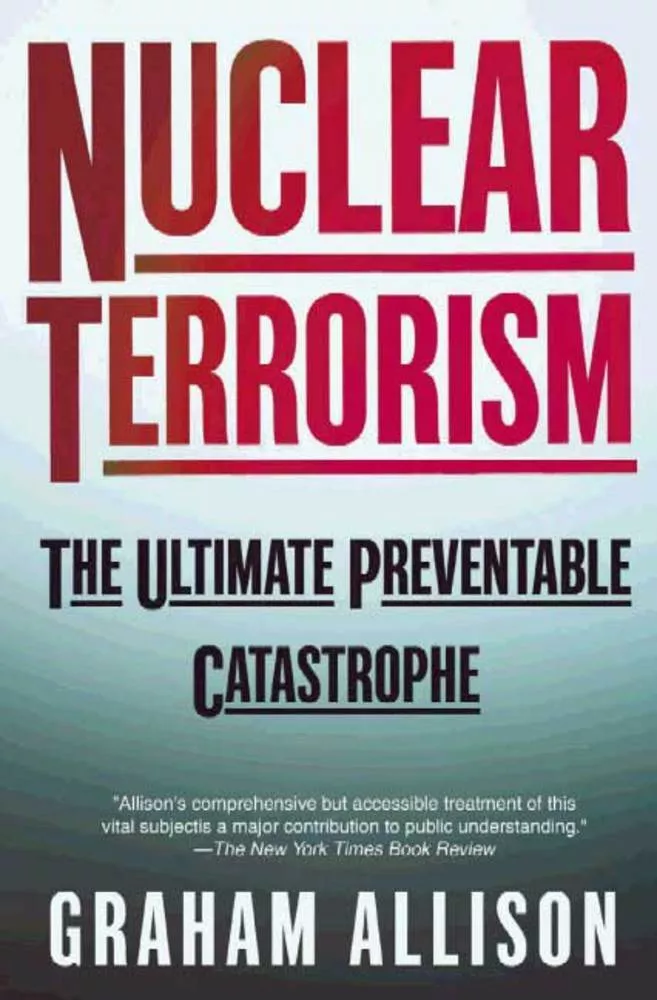
In NUCLEAR TERRORISM: The Ultimate Preventable Catastrophe, Graham Allison, founding dean of Harvard’s modern John F. Kennedy School of Government, a former top Pentagon official, and one of America’s leading scholars of nuclear strategy and national security, gives us an urgent call to action. He makes the case that nuclear terrorism is inevitable—if we continue on our present course—and he sets out an ambitious but achievable plan for preventing a catastrophic attack before it’s too late.
Given the number of capable groups with serious intent, the increasing accessibility of weapons or nuclear materials from which elementary weapons could be constructed, and the countless ways by which terrorists could smuggle a weapon across America’s borders, Allison argues that if the U.S. and other governments keep doing what we are doing now, a nuclear terrorist attack is inevitable. Yet Allison is no pessimist. He contends that the big and underreported news is that nuclear terrorism is preventable. “As a simple matter of physics, without fissile material, there can be no nuclear explosion. There is a vast – but not unlimited – amount of it in the world, and it is within our power to keep it secure,” Allison writes. “No fissile material, no nuclear explosion, no nuclear terrorism. It is that simple.” The centerpiece of a strategy to prevent nuclear terrorism must be to deny terrorists access to nuclear weapons and materials. To do this, we must shape a new international security order according to a doctrine of the Three No’s: No loose nukes, No new nascent nukes, and No new nuclear states.
In this timely book, Allison provides in plain and accessible terms the “who, what, where, when and how” of nuclear terrorism – and explains how we can act now to prevent it.
SELECT REVIEWS
“Graham Allison has written at once a gripping page-turner and a sober how-to manual on preventing nuclear catastrophe. Allison shows how the Bush Administration, despite its repeated warnings of ‘mushroom clouds’ on American soil, has not done what it can to stem proliferation, stave off dirty bomb attacks, or prevent the advent of new nuclear states. Drawing upon his experience in government, Allison offers grim forecasts and recommends workable measures -- measures that could hardly be more timely, or more necessary.”
- Samantha Power, Pulitzer Prize-winning author of “A Problem from Hell”: America and the Age of Genocide.
“Graham Allison’s NUCLEAR TERRORISM is absolutely first-rate. Our survival as a civilization may well depend more than anything else on our heeding the recommendations of this chilling and superbly-crafted book.”
- R. James Woolsey, Former Director of Central Intelligence
“Graham Allison has produced a book that it is truly alarming about the danger of nuclear terror - yet optimistic about our prospects if we do all that we could and should. One only hopes it is read and heeded.”
- Richard Haass, President, Council on Foreign Relations
Frequently Asked Questions about Nuclear Terrorism
Allison, Graham. “Nuclear Terrorism: The Ultimate Preventable Catastrophe.” Henry Holt & Company, August 9, 2004





